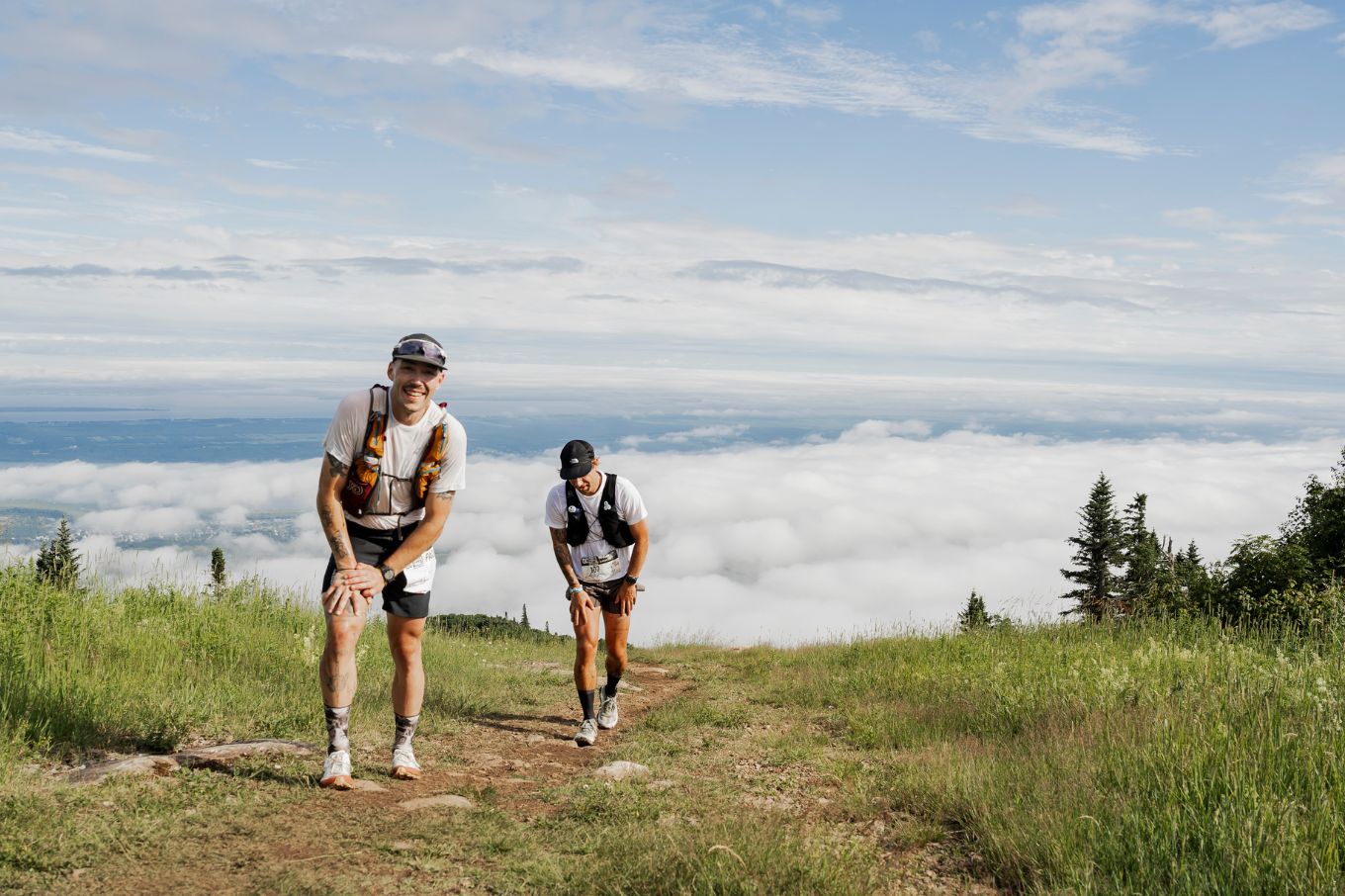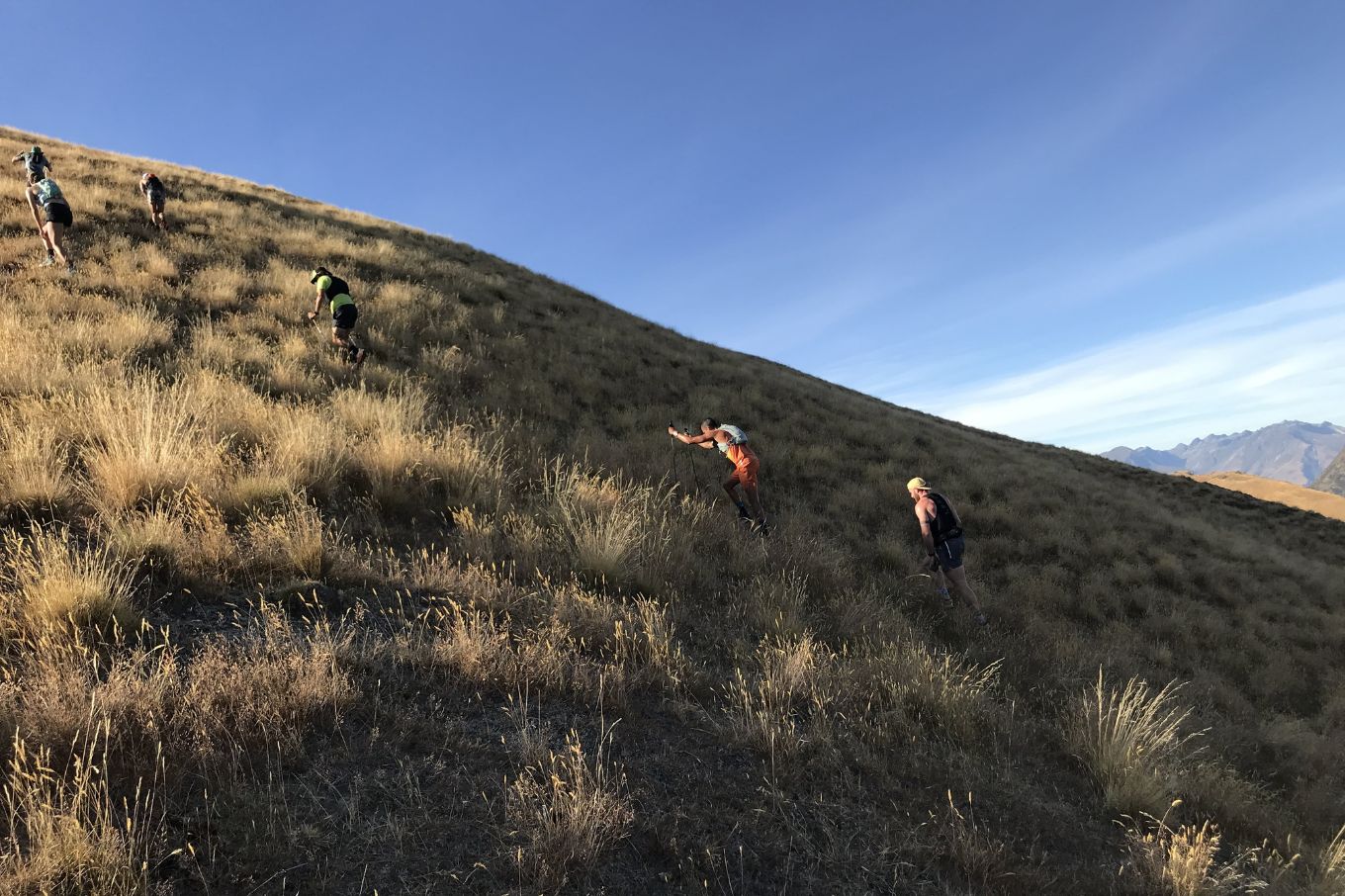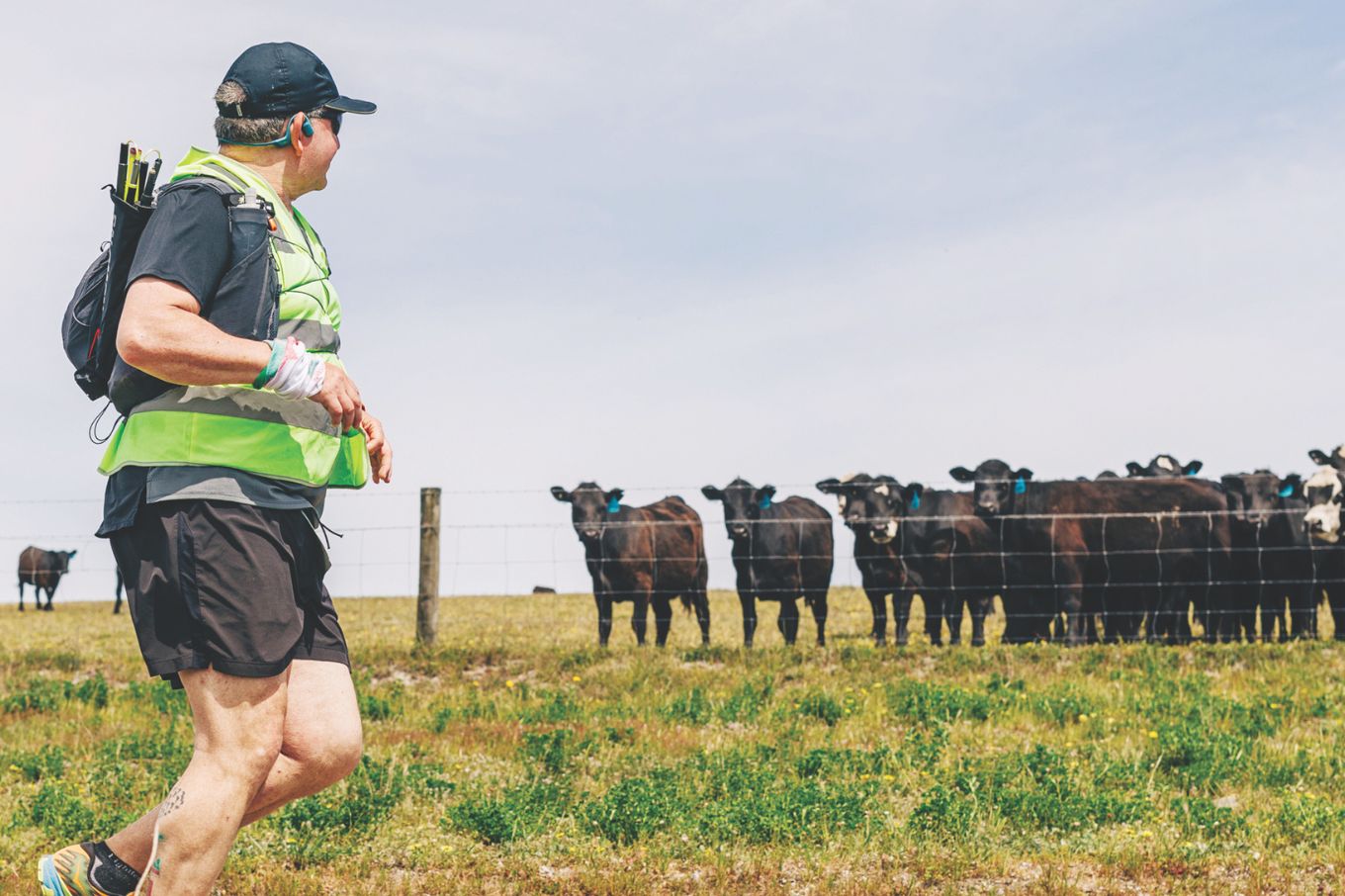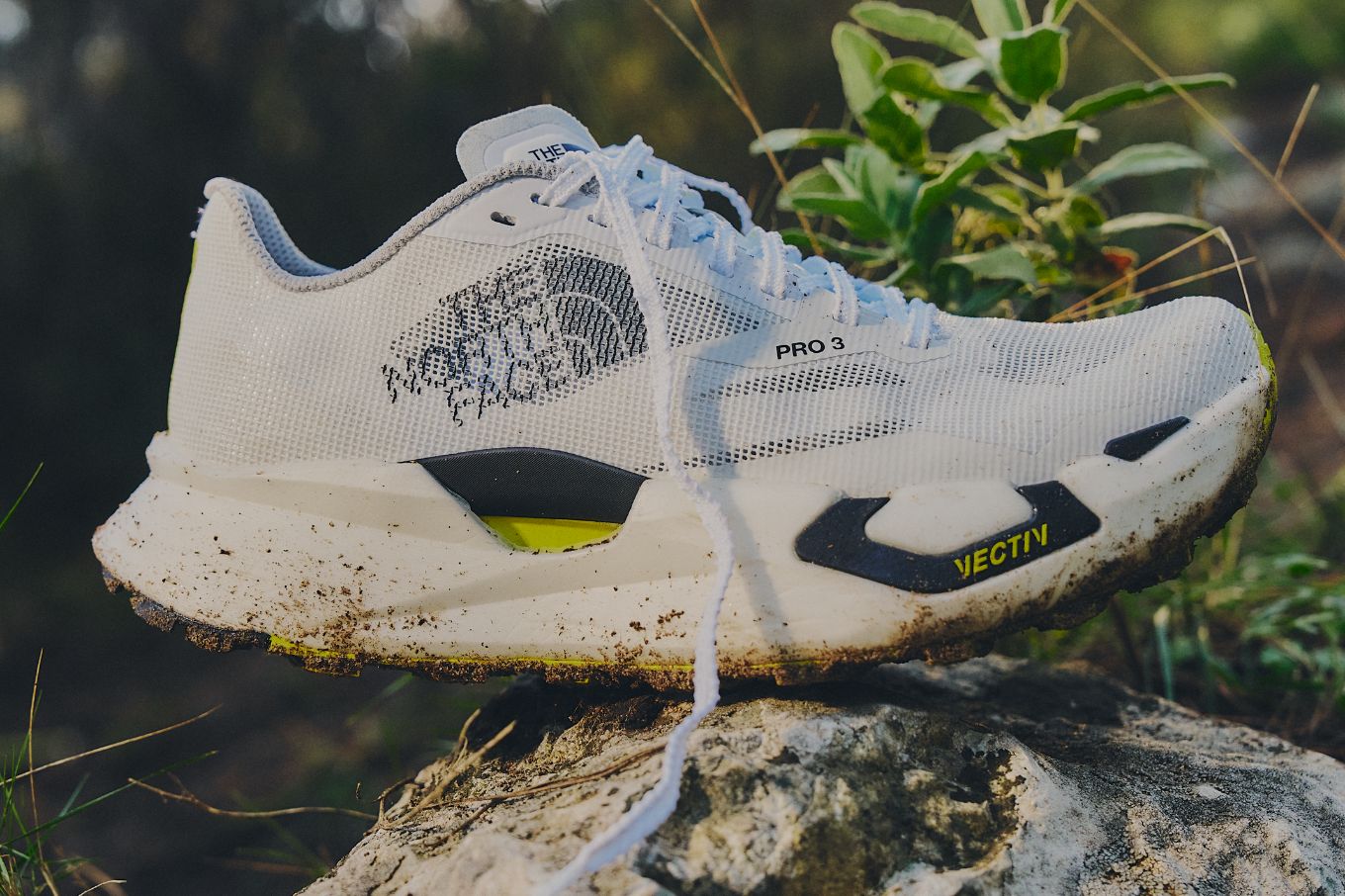Earlier this year, an Aussie and a Kiwi smashed the world record in the backyard racing format. West Australian Phil Gore and New Zealander Sam Harvey took to the Australian Backyard Masters start line in country Queensland last June and before they knew it, their names were set in stone as they equalled the record of 101 laps (yards) with Phil then completing one more lap to claim the title of a new world record. Kate Dzienis got a chance to catch up with both endurance athletes, as well as race director Timothy Walsh, to get the lowdown on the day it all happened.
It’s the hottest part of the day in regional Queensland. The clock strikes noon, and with it, the sun beats down endlessly with no reprieve in sight. A cow bell sounds, its vibration trilling across the wide expanse of a cattle farm, signalling the start of something magical about to happen.
Wednesday. June 21, 2023. One hour earlier, at 11am, an Aussie and a Kiwi broke the world record in backyard racing at Dead Cow Gully at the inaugural Australian Backyard Masters, and the running community went off its nuts.
Everyone called it Breaking 101. From live streamers and crew members on site, to anyone keeping updated via social platforms, Perth’s Phil Gore and New Zealand’s Sam Harvey completed 101 laps that morning – breaking the record set by Belgian runners Merijn Geerts and Ivo Steyaert at the Backyard Ultra World Team Championships in October 2022.
At 12pm on Wednesday, June 21 both Phil and Sam stood at the start line ready to take it even further, their bodies taking their spirits to a new level of euphoria; and their spirits taking their bodies to a new level of pain. High noon and they’d matched the record, but now they needed to secure a new one for all the world to witness.
Both men took off from the start line to tackle lap 102, the furthest any backyard entrant on the planet has done. Testing their bodies to the absolutely maximum, Sam made the decision to turn back around, leaving Phil to complete those last 6.706km on his own and by 2pm, as he took those last steps towards his wife and lead crew, Gemma, Phil set the new world record of 102 laps with Sam graciously granted the title of Assist.
Going into the Masters, breaking records was never something Phil had set his sights on. He went into the race simply wanting to do ‘his thing’ and follow his plan – it was all about focusing on what he was doing at that exact moment.
“I was never hanging out to get to the world record, and I thought we’d (Sam and I) be done around lap 98,” he explains.
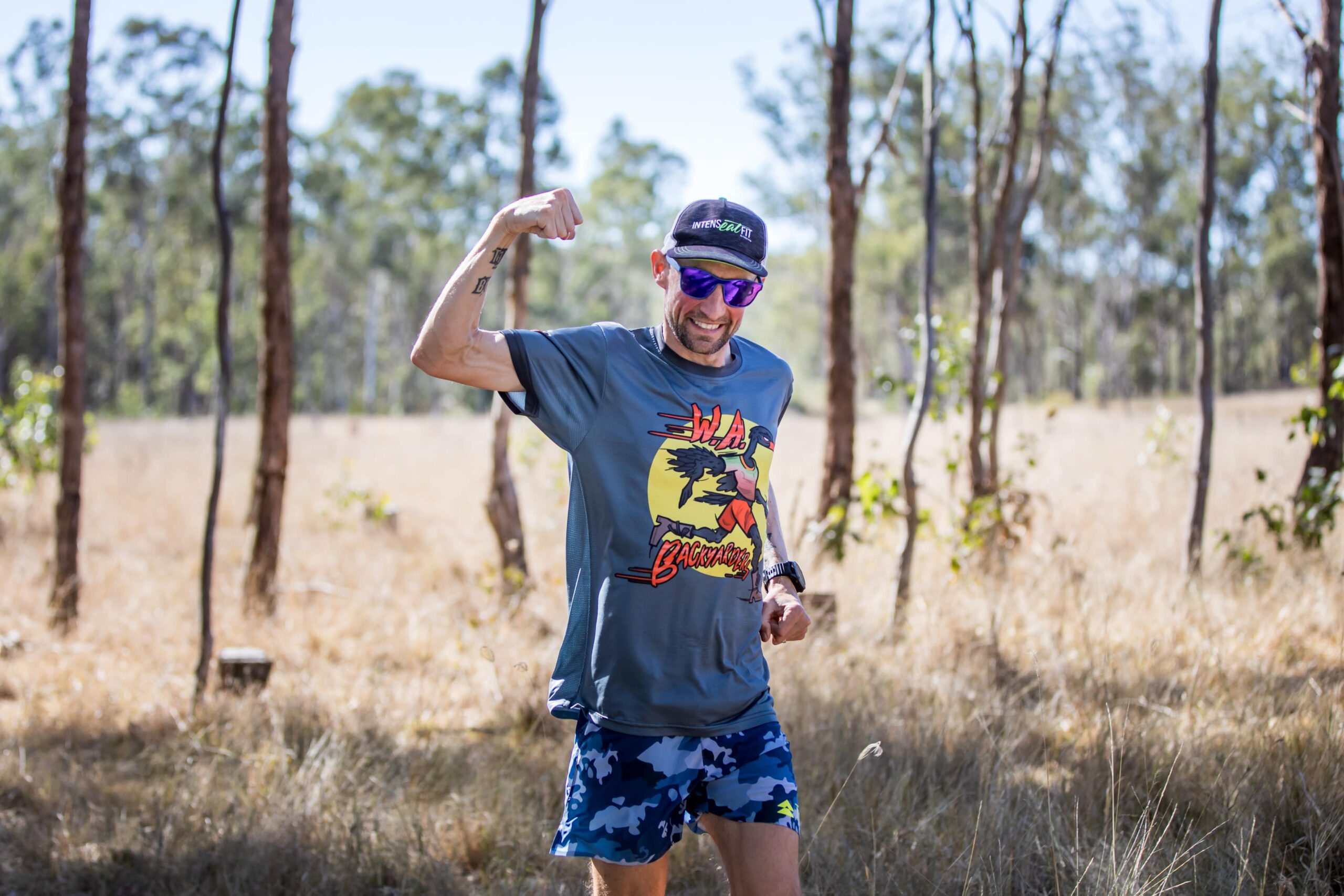
“In my head, I thought yeah, this is still such a great title. I wasn’t bummed or anything that we weren’t going to get to the record. But then we both lined up for lap 99, and I thought right, we’re doing this. Only three more laps. I never really thought at that point that we could get to it.
“Suddenly, we started 101 and I was like, wow, we’re going to get the world record and in my head I thought right, this is what we’re doing. We’re doing it.”
Phil never has a set goal in mind when
he enters last one standing events; his main ambition being to simply stay in the race for as long as he possibly can. It doesn’t mean strolling up to the start line and just going willy nilly – he does have contingencies in place, as many serious runners do, in the form of a spreadsheet with plans for each potential lap. Each lap consists of information he and his crew follow, from nutrition and shoe changes, to naps and showers – not just what pace to take.
And those laps don’t stop at a specific number so in the event of going beyond what he may have thought possible, the plan is still right there in front of him.
“I go into an event like Masters with the mindset that I could potentially be there for four or five days, but I don’t set anything as a particular goal because you just never know what’s going to happen, especially with a backyard,” he says.“
My spreadsheet has everything broken down into every single hour; it tells
me what pace I’m going to go at, what
I’m going to eat during the break, if I’m going to sleep or not, when to re-apply sunscreen…it helps both myself and my crew know ahead of time what we’re going to do during the break between laps so no one has to think about anything.”
Phil works with three pace ranges – a slow recovery lap (50 minutes) which enables him a 10 minute break before the next lap for a quick rest and to settle his stomach, an easy pace 45 minute lap which allows him to have something to eat within his 15 minute start window, and a 40 minute lap if he’s planning a shower or a nap. He re- iterates it doesn’t necessarily dictate exactly how fast to go, but offers him a guide to what he should aim for to get a break.
Going into the Masters event, Phil knew the big names that he’d be facing, including Sam as well as Ryan Crawford and America’s Harvey Lewis so despite never going in with a set goal in mind, he did know that if it was a good race, he’d be there for the long haul.
When asked how it feels to essentially be the person to beat in the world of backyards, Phil says it’s one of the most surreal emotions he’s ever gone through.
“For me, I’ve simply been in the right place, at the right race, with the right circumstances and where the right people have helped me get there,” he affirms.
“A lot of it depends on who can push you to those limits, but many runners can seriously surprise you – Sam, for instance, his PB was 46 laps in New Zealand, but at Masters he got all the way to 101. That’s an incredible jump, and such a great effort.”
Back in New Zealand, Sam started running as a means of staying fit and used it as training for other sports like rugby. After moving to Nashville, Tennessee in the US to play and coach rugby, his fitness peaked and life revolved around rugby, boxing and running. It was there he ran his first official 5km race where he came fourth.
From Tennessee to Ireland, more races were put on the table and Sam found himself on the podium for each one. When he returned to New Zealand, he did all the events he could get his hands on – boxing matches, triathlons, mountain bike races. Until eventually in 2018 he did his first 50km at Krayzie Kaypers in Orton Bradley Park near Christchurch, and running became a central part of his life.
Sam reveals the Masters this year were a semi-A race for him and his goal was to break the world record and win the World Championships. Having been raced at the Dead Cow Gully course, he went into the Masters knowing it was the only venue flat enough to break records so went into it with an emphasis on that.
“I knew who Phil was, and of course
who Harvey Lewis was, so looking at the Masters, I figured we were probably the ones that were going to go the distance in the end,” he reveals.
“I wasn’t wrong.
“The first 48 hours would have honestly been the hardest. It’s those early hours of the race where my mind wanders and I get bored, the bulk of the work is still to come, and it’s in those moments where you figure your time could be better spent elsewhere. After the 48 hour mark in this one though, it was party time. That’s when I truly felt like we were racing and I remembered why I was there.
“I think the only time I was truly a bit mentally weak was when I let supporters and event staff talk me into pulling out
of the race. I take full ownership of that though. If it hadn’t have been for me showing how crook the pneumonia had made me (I was a little bit sick leading into the race and I became a big bit sick by the end of it), I wouldn’t have been a candidate for them wanting to pull me from the race.
“It feels pretty damn good (to be a real contender in the backyard format). I’ve been working a long time as a sportsman to finally find my place where I can succeed and dominate. I’m excited to see where I can go from here.”
There’s a lot that goes on behind the scenes to organise an event like the Masters. Race directors in general have a lot to contend with, and it wasn’t any different for Timothy Walsh, who says the Dead Cow Gully location is a different type of beast.
“Particularly in winter,” he explains. “Most Australians don’t actually realise how cold country Queensland can get; we had tops
THE BACKYARD ULTRA
Unfamiliar with backyard ultras? They’re also called Last One Standing events, and test your body differently than a continuous race because no matter what condition you’re in, you are forced to stop every 6.706km and take a break until the start of the next hour. Whether you’ve completed the distance in 35 minutes or 55 minutes, whatever time is left before the hour strikes, that’s all you have – for recovery, food, sleep, hydration, change of clothes or shoes, reapplication of creams, game plan review.
There are a number of ways to finish your race at a backyard, which is called a DNF.
- Receive an automatic disqualification for coming in after the 60-minute mark
- Choose not to stand at the start line when the hour is about to start
- Start a lap but turn around to return
- Be the last one to complete a lap and be declared the winner Check our 2024 Event Guide for the next backyard ultra near you to give it a red hot crack!

